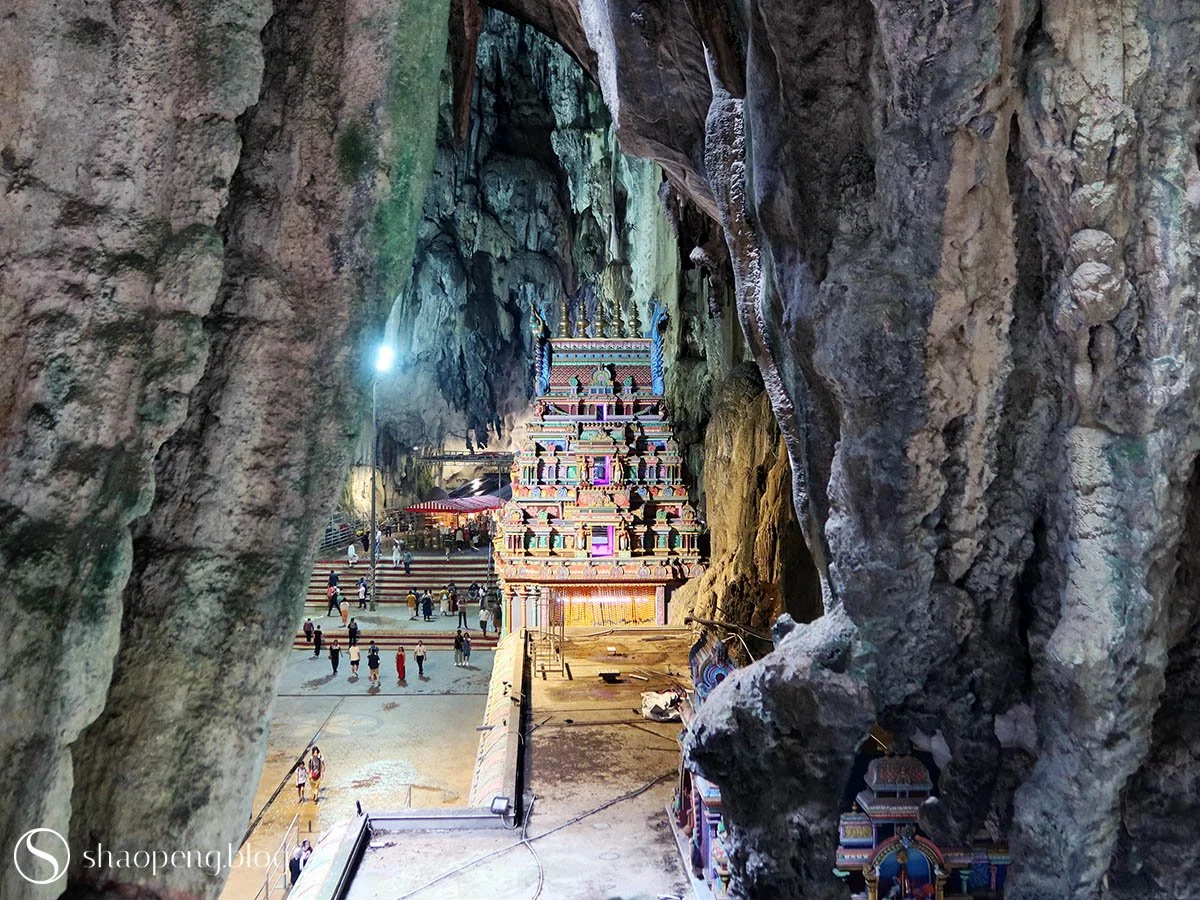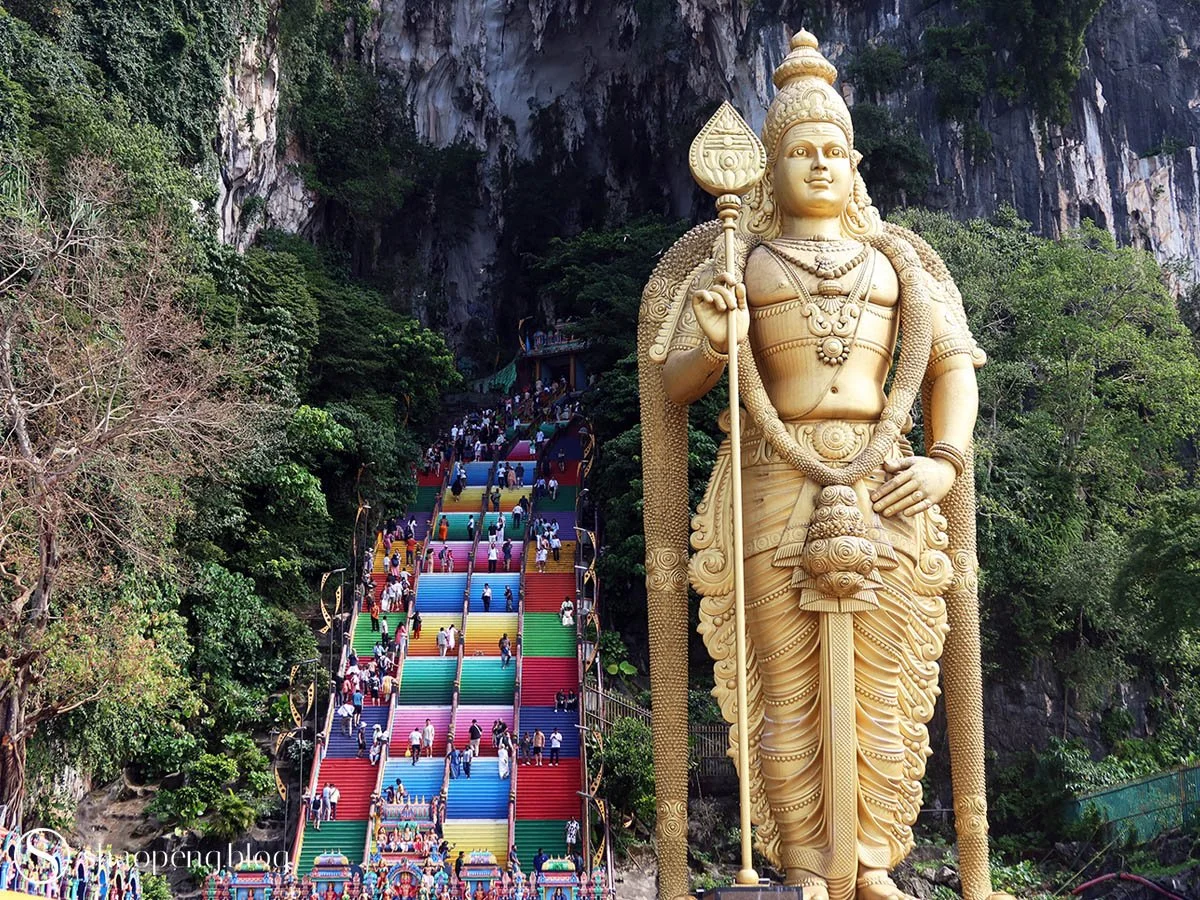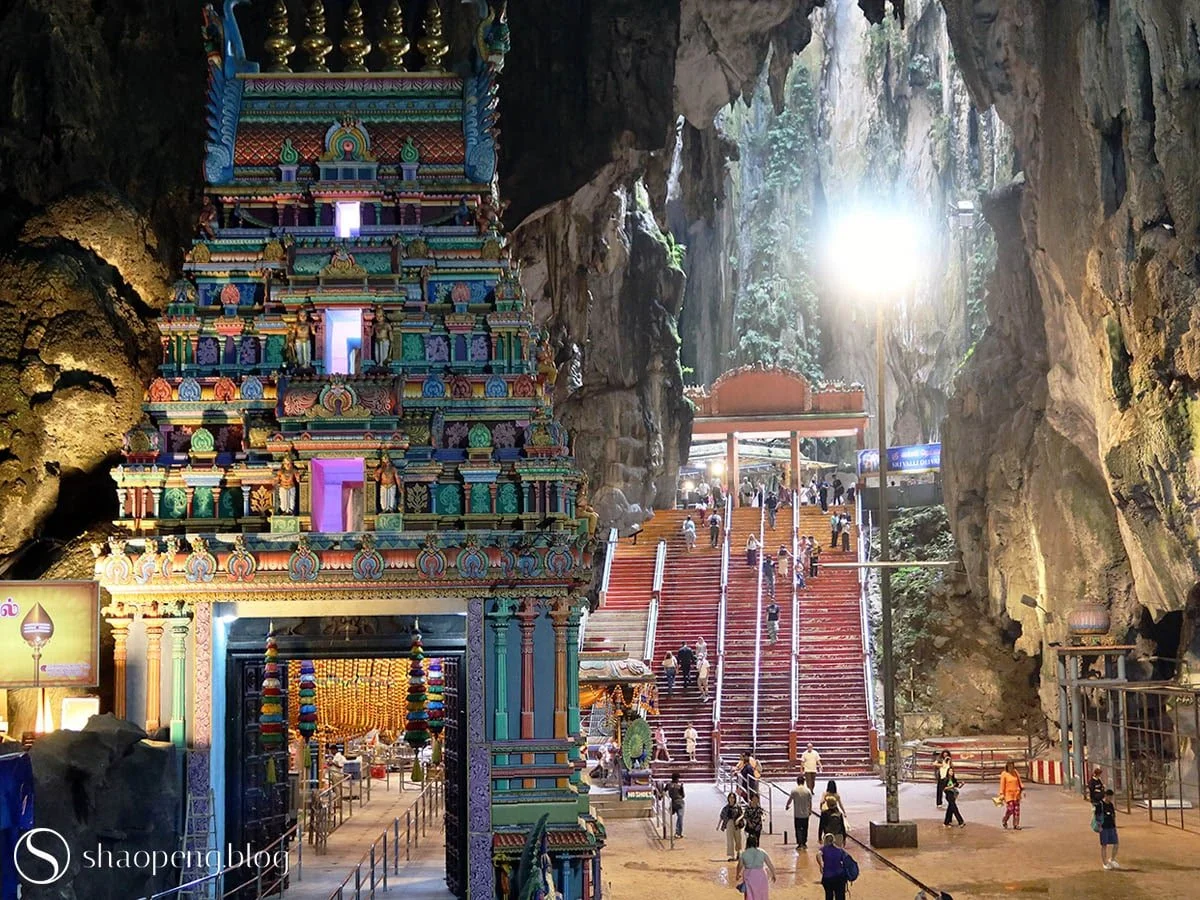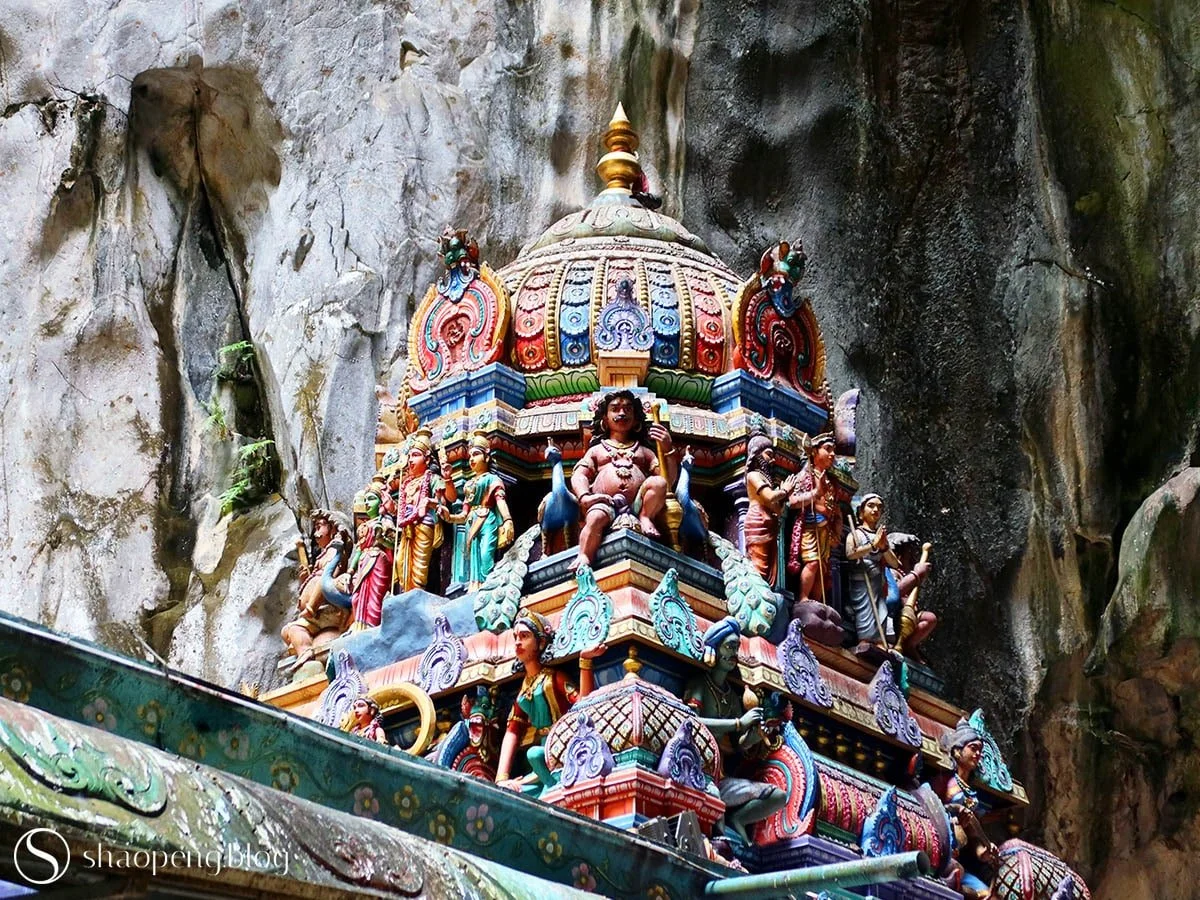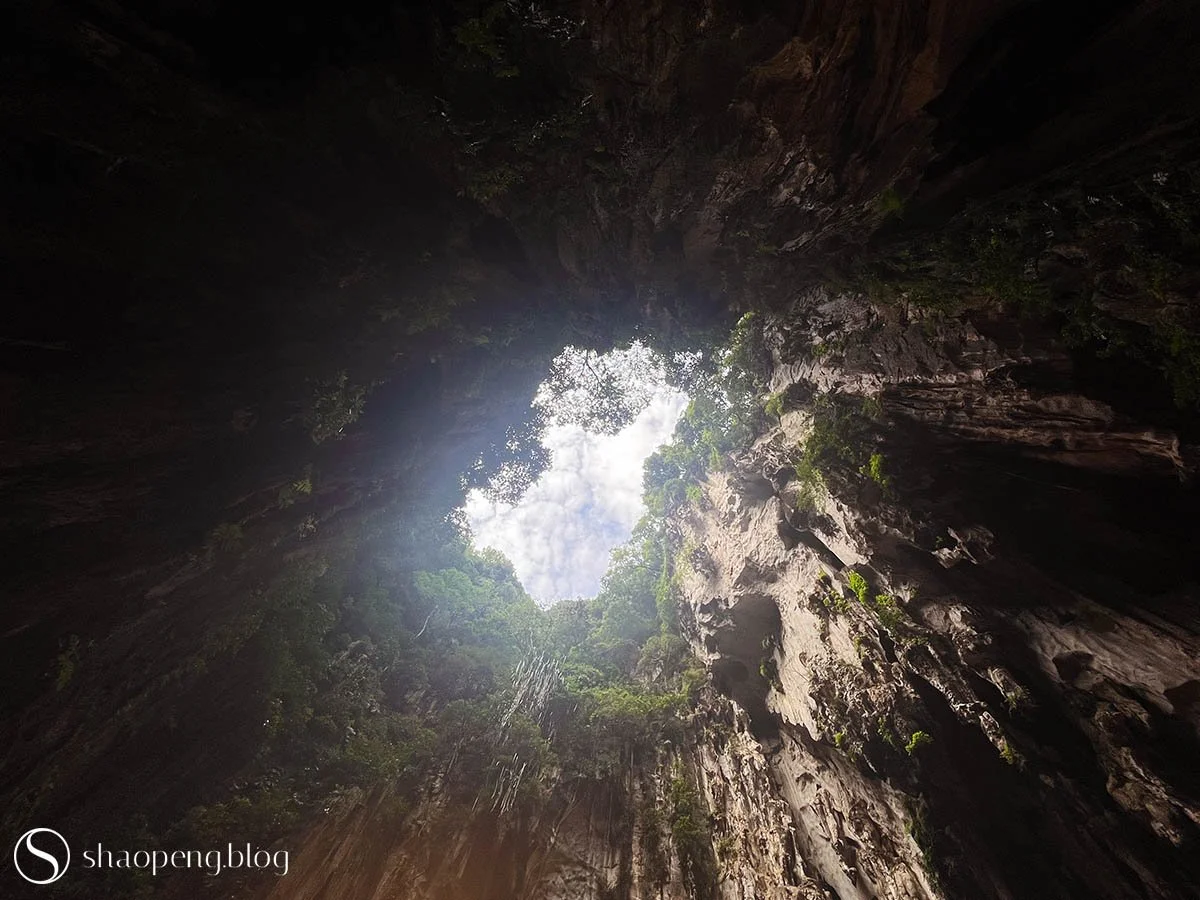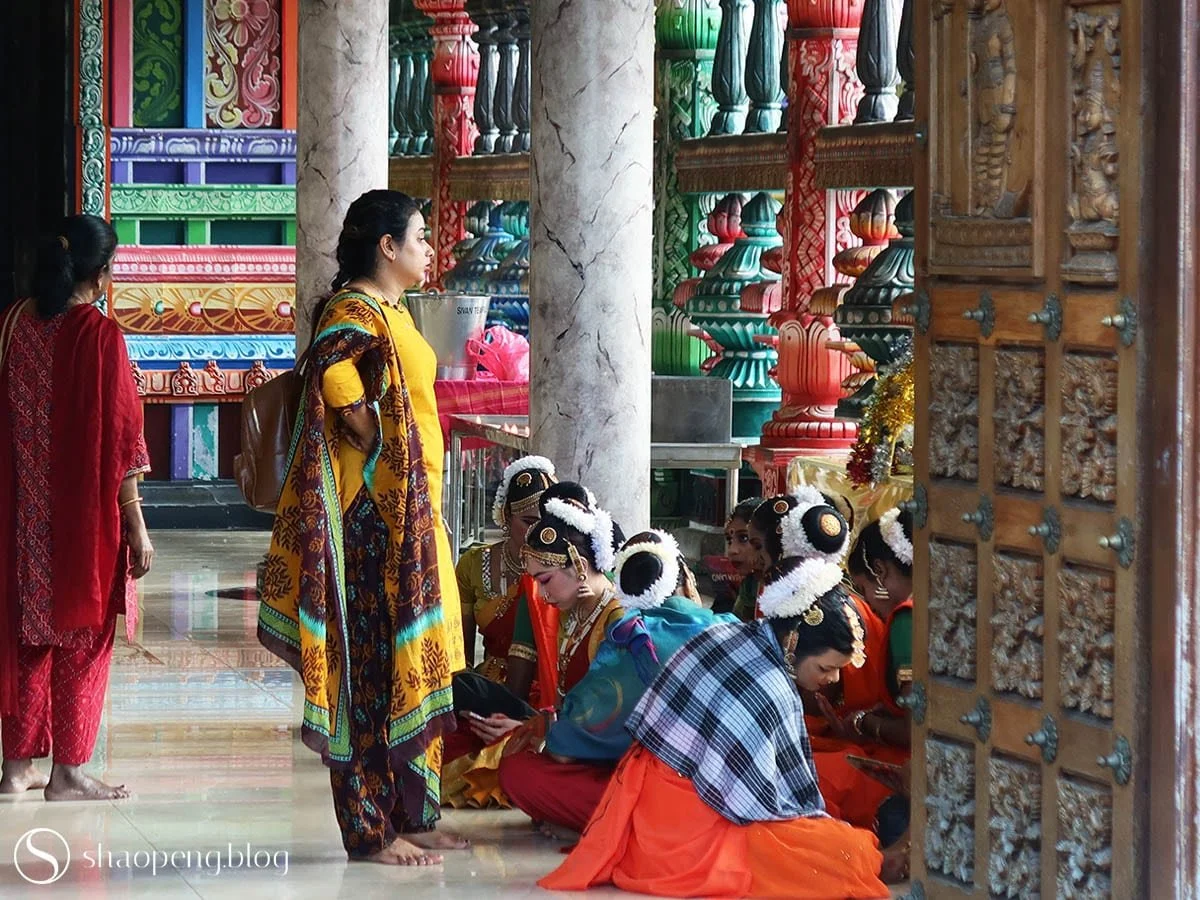Wander in Malaysia: Batu Caves
Nestled within a 400-million-year-old limestone cave, Batu Caves stands as one of Malaysia’s most revered Hindu sanctuaries, where spirituality and wonder linger in the hearts of visitors and pilgrims alike.
Sense of Wander: ★★★★★
The Sri Velayuthar Temple, dedicated to Lord Murugan, is located inside the main cavern of the Batu Caves in Malaysia.
KUALA LUMPUR, Malaysia — It’s early morning — or at least we think it is — as we head north to the outskirts of Kuala Lumpur, arriving at the drop-off point for Batu Caves around 9:30 a.m. Yet the place is already bustling with crowds; some visitors are just beginning their pilgrimage, while others have finished and are making their way out.
Following the flow of people, we pass stalls offering flowers for puja, a handful of Hindu temples, and finally, the giant statue towering before us. At first, I mistake it for Lord Shiva. But when I notice the iconic conch shell, or shankha, is absent, I realise that standing before us is Murugan, the Hindu god of war.
Also known as Kartikeya, Skanda, or Subrahmanya, Murugan is the son of Shiva and Parvati, and brother of Ganesha. Clad in gold, adorned with flower garlands, and holding the vel — his divine spear — in his right hand, he stands as a vigilant guardian.
This 42.7-metre statue, built by Tamil Malaysians at a cost of 2.5 million ringgits, was once the tallest of its kind in the world until 2022, when it was surpassed by the statue in Sri Muthumalai Murugan Temple, Tamil Nadu. Before us, the statue guards the entrance to the Instagrammable rainbow-hued staircase that leads toward the Batu caves — a pilgrimage site that draws nearly two million visitors each year.
Standing at the entrance of Batu Caves, the statue of Lord Murugan is the second tallest of its kind in the world.
Batu Caves demands more than curiosity. It calls for endurance — a pair of strong legs to ascend the 272 steps leading to the temples nestled inside the limestone above. Along the way, you’ll see visitors pause, catching their breath, caught between the choice to push on or retreat — it’s an internal struggle between perseverance and surrender.
Most, like me, choose to continue. Each flight of steps is awash in a gradient of colours, which helps lighten the journey. And for those with a hopeful heart, it can almost feel like a stairway to heaven.
Visiting Batu Caves requires some physical effort, as one must climb the 272-step staircase leading up to the sacred site.
Small shrines are scattered along the cliffside of the cave.
Reaching the top, your perseverance is rewarded. Little shrines are scattered along the side of the cave walls, and temples — both large and small — nestle in the heart of the caverns.
Batu Caves itself is a vast limestone system, formed over 400 million years ago. Once shelter for the indigenous Temuan people, it was rediscovered in 1878 by American naturalist William Hornaday. Its name derives from the Malay word batu, meaning “rock.”
The first visitors to formalise worship here were Tamil Malaysians. In 1890, K. Thamboosamy Pillay established a shrine dedicated to Lord Murugan. Today, the largest cave hosts several temples, including the Sri Velayuthar Temple.
Inside, high priests perform pujas while devotees wait in silence — the air thick with reverence and devotion. Its ornate gopurams, the towers typical of Dravidian temple architecture, rise against the backdrop of dramatic stalactites, drawing the eyes upward in awe.
As visitors step into Batu Caves, the Sri Velayuthar Temple, dedicated to Lord Murugan, comes into view.
Devotees taking part in the puja inside the Sri Velayuthar Temple.
Walking through naturally formed caves is an experience I’ve had before. In fact, the experience reminds me of an earlier visit to the Ear of Dionysius in Syracuse, Sicily — but here, with the presence of temples and shrines, it feels profoundly different. The human touch of devotion blends with the grandeur of nature, leaving me humbled.
The final flight of stairs leads to the innermost sanctuary: the Sri Subramaniar Swamy Temple. Small yet intimate, it exudes an air of sacredness beyond the main temple behind us. Sunlight filters through the opening above, falling onto the shrine like a divine touch.
Figures of Hindu deities and peacocks embellish the colourful dome of the Sri Subramaniar Swamy Temple.
During the day, sunlight streams through the limestone opening, falling on the shrine like a touch of the divine.
Returning to the base of Lord Murugan once more, I pause to take in the statue and its surroundings. From this angle, the rainbow staircase seems almost like a coloured extension of his vel, a vision said to have inspired Thaipusam to transform this place into a site of Hindu worship.
At ground level, other temples await curious wanderers. Their colourful columns and Dravidian designs leave beholders in visual ecstasy. Visitors and offerings flow in and out, while clever monkeys seize fruit and snacks with swift precision and fierce aggression.
Inside one temple, a group of dancers rests, reminding us that classical Indian dance grew from devotion to deities. Devout worshippers move from one statue to another, performing pujas before each. Some press palms together in prayer for blessings and protection; others seek guidance and solace.
And I? I wander. I observe.
I let the spiritual embrace of the caves wash over me. Here, touched by the divine, I hope that one day I will find clarity in what I am truly searching for.
A monkey finds refuge in a Hindu temple.
Outside the Batu Caves, the Sri Maha Durgai Amman Temple is home to a giant reclining statue of Durga, the warrior goddess in Hinduism.
A group of dancers resting inside a Hindu temple reminds us of how classical Indian dance originated in devotion and worship of temple deities.
Wanderer’s tips — Batu Caves is easily accessible from Kuala Lumpur via the KTM Komuter train. The Batu Caves station offers a direct route from KL Sentral, taking around 30 minutes — approximately the same time if you opt for a Grab ride. To experience the caves in peace, I recommend visiting before 8 a.m.
Besides the main caves, there are other experiences to explore. The Dark Caves offer a journey into the ecosystem of the limestone caverns in complete darkness. Nearby, the Ramayana Caves bring the Hindu epic to life through statues and murals, set in a curious, almost psychedelic ambience. You could easily spend an entire day here, immersing yourself in the sights, stories, and spirituality this sacred site has to offer.

